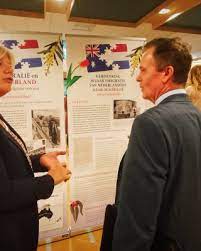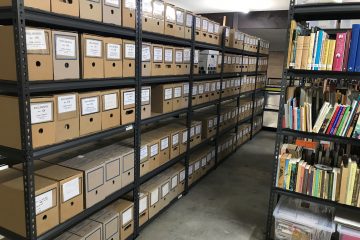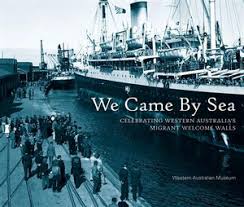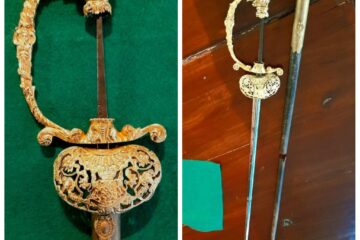
In February 2023, Australian Ambassador Dr. Greg French and State Archivist Afelonne Doek opened the temporary exhibition People Movement Stories in the Netherlands National Archives in The Hague. Since that time the exhibition has also been travelling to Perth, Brisbane and Melbourne.
In the exhibition, twelve people tell the story of their migration to Australia and the Netherlands, about their motivations, about the journey and reception in their new home. The visitor discovers more about the migration movements between the two countries that have changed in recent years and how migrants reshaped their lives after arrival. People Movement Stories connects that story with films, photos and the migration registers kept by the Dutch Embassy and Consulates in Australia.
These registers were handed over to the Dutch Australian Cultural Centre in 1998. After the termination of the bilateral emigration program, the administration was no longer necessary. It turned out to be a rich source of information about those migrants: names, dates and places of birth, but also how they fared in the country of arrival. After various negotiations the cards were later handed over to the National Archives in the Netherlands. Researcher Marijke van Faassen and the team of the the Huygens Institute in the Netherlands used this information that now plays an important role in the content of the exhibition.
The exhibition also marked the kick-off of expanding the website https://migrant.huygens.knaw.nl with five new stories and digitised collections from the National Archives Australia and the National Archives the Netherlands.
Within the International Heritage Cooperation Program, the National Archives is working with the National Archives Australia to digitise these archives and make them accessible online. With the Migrant, Mobilities and Connection (MIGRANT) project, the Huygens Institute is developing methods to digitally connect these scattered migrant collections.
People Movement Stories was created to commemorate eighty years of diplomatic relations between the Netherlands and Australia. The exhibition was made financially possible by the Australian Embassy in The Hague and the Dutch Embassy in Canberra.
The Exhibition was developed by the research organisations: Huygens ING, KNAW Humanities, Cluster Amsterdam and School of Arts and Humanities an the Edith Cowan University Western Australia.
Click here for more information.
Introduction to the exhibition.
Why this exhibition?
In this exhibition twelve people who migrated at various times between 1953 and 2014 to Australia or the Netherlands tell us their stories. What motivated them to move? When and how did they migrate? What drivers best illustrate their moves in a given period? Were they looking for a better life or afraid of the Cold War? Did they choose for Australia or the Netherlands and why? Was it a fantastic overseas job; joining a husband or, the ‘Grand Tour’ that becomes the ‘Love story’?
We include the children’s perspective, who’d had no say in the matter of their migration. Many were subject to their parents’ homesickness, return or seesaw migration – then in Australia then in the Netherlands – or frequent internal shifts. For the first time ever, we also throw a spotlight on the reverse process, that is people movement from Australia to the Netherlands. In our sample it was centred on the ‘love story’ which occurs in both directions anchoring a person in a new country. Among out protagonists, the “Grand Tour” preceded the “love story” in every instance. However, unlike in the past, when it was the preserve of the wealthy – our interviewees were budget-driven backpacking “Grand Tour” adventurers. How this relates to policy is explained on line.
The Migration Paper Trail
Migrating people leave behind paper traces in local, state and national, sight and sound archives in both their countries of departure and destination. We show how these enrich an oral history interview, a family film and photographs in the family album once they are digitised. Or vice versa – how these private collections or oral histories can enrich policy files in archives used by researchers. The long-term advantage of this online process and presence is the possibility to keep adding more information to stories into perpetuity thus showing the migrant experience from all kinds of perspectives. Visitors can navigate between our online and in vivo stories using the QR code at the bottom of each banner.
Credits
This exhibition is a project of the Dutch-Australian Shared Cultural Heritage collaboration between Edith Cowan University, Perth Western Australia and the Huygens (KNAW) Institute, Amsterdam. It is funded bi-laterally by the Australian Embassy in The Hague and the Dutch Embassy in Canberra.
Puzzle with the national flag of Australia and Netherlands on a world map background.
Personal stories:


